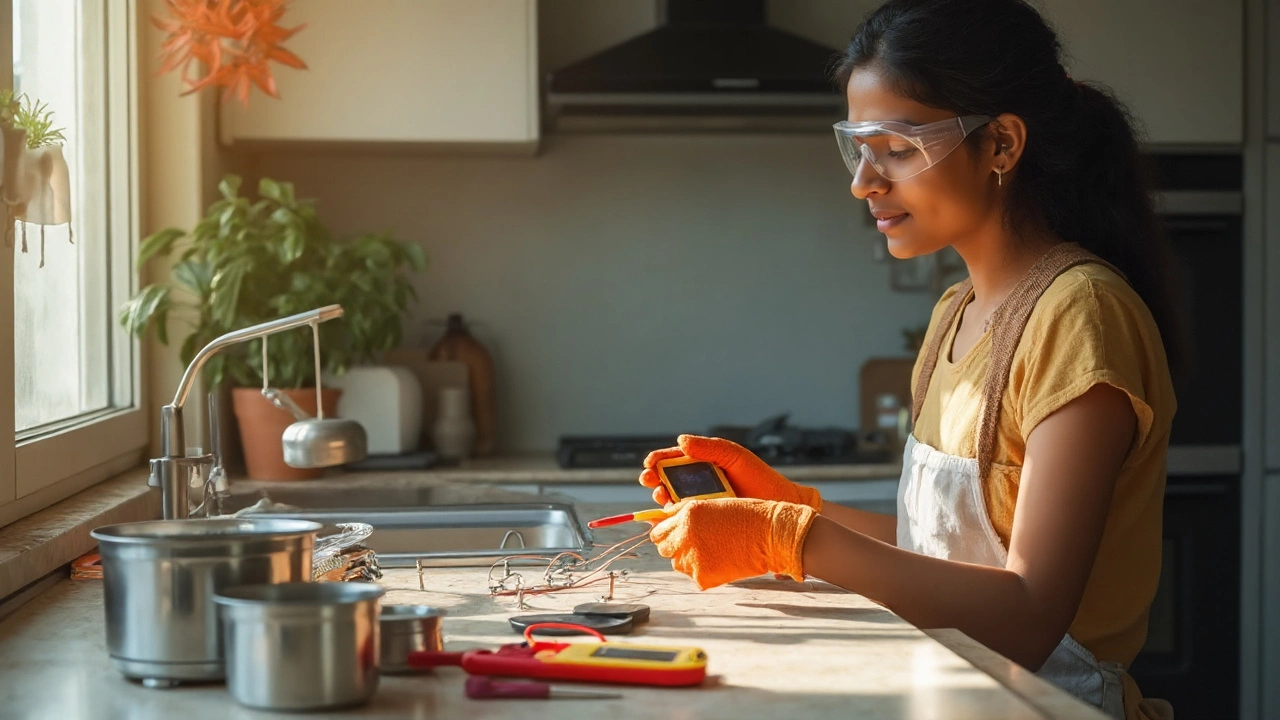Oven won’t heat? Learn fast, safe checks for electric and gas models: elements, igniters, sensors, fuses, relays, and wiring. DIY steps, costs, and when to call a pro.
Oven Not Heating? Quick Fixes, Common Causes & When to Call a Pro
If your oven suddenly stops heating, the kitchen can feel like a dead zone. You might be tempted to throw in the towel or call an expensive repair service right away. Before you do that, try a few simple checks that often solve the problem. Most heating issues are caused by something you can spot in minutes, and fixing them yourself can save both time and money.
Common Reasons Your Oven Won’t Heat
There are a handful of culprits that show up again and again. The first one is a tripped circuit breaker or a blown fuse. ovens draw a lot of power, and a sudden spike can trip the breaker. Check your home’s breaker panel and reset it if needed.
Next, look at the oven’s heating element. In electric ovens, the element glows red when it’s working. If it’s dark or broken, the oven can’t produce heat. A visual inspection is easy – just remove the back panel and see if the coil is intact.
For gas ovens, the issue is often the igniter. A weak igniter won’t spark the gas, leaving the oven cold. You’ll usually hear a clicking sound without a flame. A faulty igniter needs replacement, but you can test it with a multimeter if you have one.
Another frequent problem is a faulty temperature sensor. The sensor tells the control board how hot the oven is. If it’s giving the wrong reading, the board may think the oven is already hot and won’t turn the element on. Sensors are cheap and easy to replace.
Finally, the oven’s control board itself can develop a bad connection or a blown component. This is a bit tougher to diagnose, but if none of the above fixes work, the board might be the issue.
Step‑by‑Step DIY Checks
1. Reset the power. Unplug the oven, wait a minute, then plug it back in. For gas ovens, turn off the gas line, wait a few seconds, and turn it back on. This simple reset can clear minor electronic glitches.
2. Test the breaker. Locate your home’s fuse box, find the breaker labeled “oven” or “kitchen,” and flip it off then on. If it trips again, you’ve likely got an electrical fault that needs a professional.
3. Inspect the heating element. Remove the back panel (usually a couple of screws). Look for any visible breaks, black spots, or a burnt smell. If the element looks damaged, order a replacement part that matches your oven’s model.
4. Check the igniter (gas ovens). When you turn the oven on, listen for a click. If you don’t see a flame, use a multimeter set to ohms. A good igniter reads around 70‑100 ohms; higher means it’s dead.
5. Test the temperature sensor. The sensor is a thin metal rod inside the oven cavity. With the oven off, pull it out and measure resistance with a multimeter. At room temperature, most sensors read about 1,100 ohms. Significant deviation signals a bad sensor.
6. Look for loose wires. While the oven is open, gently wiggle the wiring harnesses. Loose or corroded connections can stop voltage from reaching the element or igniter.
If after these steps the oven still refuses to heat, it’s time to call a qualified technician. Trying to replace a control board or deal with gas lines without proper training can be dangerous.
Remember, regular maintenance can keep heating problems at bay. Clean the oven regularly, avoid spilling liquids on the bottom panel, and schedule a professional check‑up every few years. With a bit of curiosity and these easy checks, most “oven not heating” scares can be solved quickly, letting you get back to baking, roasting, and warming up your favorite meals.
Wondering why your electric oven just stopped working? This article covers the most common reasons ovens go on the fritz—from blown fuses to sneaky control panel glitches. We’ll talk through simple checks you can do at home, so you don’t have to panic or call a pro just yet. Plus, I’ll share some handy tips to keep things running smoothly next time. Even if you’re not into fixing appliances, you’ll understand what’s going on behind those stubborn dials. No fluff, just real advice for getting dinner back on track.

